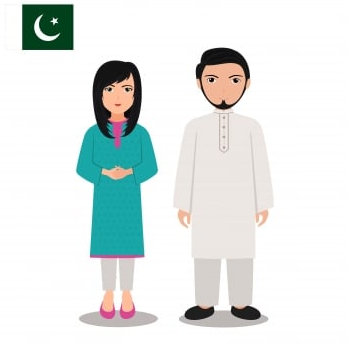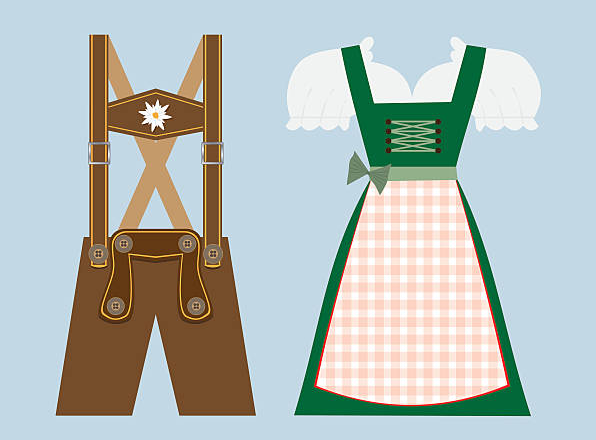Bangladesh, a country with a rich cultural heritage, boasts a vibrant and diverse national dress that reflects the essence of its people. The Bangladesh National Dress holds significant importance, symbolizing the country’s history, traditions, and identity. In this article, we will explore the captivating world of Bangladesh’s national dress, delving into its history, regional variations, cultural significance, and its representation on a global platform.
Traditional Clothing in Bangladesh
Different types of traditional clothing
Bangladesh has a wide range of traditional clothing, each with its unique style and purpose. Saree, Salwar Kameez, and Kurta-Pajama are among the most prominent traditional attires worn by women and men across the country. These garments hold deep cultural and historical roots and are widely cherished for their elegance and grace.
Significance and cultural importance of Bangladesh National Dress
Traditional clothing in Bangladesh is more than just a form of attire; it represents the rich cultural heritage of the nation. The clothing choices reflect the values, customs, and traditions that have been passed down through generations. The national dress plays a vital role in preserving and celebrating the cultural diversity of Bangladesh.
History and Evolution of Bangladesh National Dress
Origins of Bangladesh National dress
The origins of the national dress of Bangladesh can be traced back to ancient times. The clothing style evolved under the influence of various civilizations and dynasties that ruled the region. The Mughal Empire, in particular, played a significant role in shaping the national dress. Over the years, the national dress has undergone changes and adaptations, incorporating influences from different eras.
Changes and adaptations over time
Throughout history, the national dress of Bangladesh has evolved to adapt to changing trends and societal norms. From the simplicity of rural attire to the opulence of royal garments, the national dress reflects the transformation of Bangladeshi society. The fusion of traditional elements with modern aesthetics has led to the creation of unique and contemporary designs.
Components of the National Dress
The national dress of Bangladesh comprises various components that come together to create a distinctive and visually appealing ensemble.
Description of each component
Saree: A long, unstitched garment draped elegantly around the body, often made of silk or cotton.
Salwar Kameez: A two-piece attire consisting of a loose-fitting tunic (kameez) and trousers (salwar) or a flowing skirt.
Kurta-Pajama: A long shirt (kurta) paired with loose-fitting pants (pajama), often worn by men.
Orna: A traditional scarf or shawl worn with the national dress to bold the title and all headings of the article, and use appropriate headings for H tags.
Symbolism and cultural significance of Bangladesh National Dress
The national dress of Bangladesh holds immense symbolism and cultural significance. Each component of the attire carries a deep meaning, representing the values and traditions cherished by the Bangladeshi people. The colors, patterns, and fabrics used in the national dress often reflect the natural beauty of the country, with vibrant hues and intricate designs.
Regional Variations
Distinctive styles across different regions
Bangladesh is known for its diverse regional cultures, and this diversity is reflected in the variations of the national dress. Different regions have their unique styles, incorporating elements specific to their geography, climate, and local traditions. The weaving techniques, embroidery patterns, and choice of fabrics vary from region to region, adding richness and diversity to the national dress of Bangladesh.
Influences of geography and local traditions
The regional variations in the national dress are influenced by the geographical features and the cultural practices of each area. For example, in the coastal regions, lighter fabrics and breathable designs are favored to combat the heat and humidity, while in the colder northern regions, warmer and heavier textiles are used. Local traditions, festivals, and rituals also shape the styles and embellishments of the national dress in different regions.
Modern Adaptations of Bangladesh National Dress
Bangladesh’s national dress has also embraced modern influences and adapted to contemporary fashion trends. Designers have successfully merged traditional elements with modern aesthetics, creating a fusion that appeals to both the younger generation and international audiences. The national dress is now not only worn on special occasions but has also found a place in everyday fashion, with innovative designs that cater to the evolving tastes and preferences of the modern era.
Importance in Festivals and Celebrations
Role of national dress in cultural events
The national dress of Bangladesh takes center stage during festivals, celebrations, and cultural events. It becomes a visual representation of the country’s heritage and identity. Whether it’s religious festivals like Eid or cultural celebrations like Pohela Boishakh (Bengali New Year), people of all ages adorn themselves in their national attire to express their pride and unity as Bangladeshis.
Celebration of heritage and identity
By wearing the national dress during festivals and celebrations, Bangladeshis pay homage to their roots and honor the traditions passed down through generations. It serves as a reminder of the country’s history and acts as a unifying factor that transcends regional and social boundaries, bringing people together in their shared cultural pride.
Conclusion
In conclusion, the national dress of Bangladesh embodies the country’s rich cultural heritage and serves as a visual representation of its identity. From traditional garments like sarees and salwar kameez to modern adaptations, the national dress showcases the artistic craftsmanship, regional diversity, and evolving fashion trends of Bangladesh. By preserving and promoting the national dress, the country celebrates its cultural roots, strengthens national unity, and contributes to the global recognition of Bangladeshi fashion.
FAQs (Frequently Asked Questions)
- What is the significance of the national dress in Bangladesh?
The national dress holds immense cultural and historical significance, representing the traditions, values, and identity of the Bangladeshi people. It serves as a visual expression of pride and unity.
- Are there any specific occasions when the national dress is worn?
The national dress is commonly worn during festivals, cultural events, weddings, and religious celebrations. However, many people also choose to wear it on special occasions or as everyday attire.
- Are there regional variations in the national dress?
Yes, Bangladesh has diverse regional cultures, and each region has its unique style and variations of the national dress. Different fabrics, colors, and embroidery techniques can be seen in different parts of the country.
- How can one take care of the national dress to ensure its longevity?
It is important to follow specific care instructions for each type of fabric used in the national dress. Gentle handwashing or dry cleaning is often recommended, and proper storage in breathable bags or covers can help preserve the attire.
- How has the global recognition of the national dress impacted Bangladesh?
The global recognition of the national dress has not only boosted Bangladesh’s fashion industry but also enhanced the country’s cultural diplomacy. It has put a spotlight on the artistry and craftsmanship of Bangladeshi designers and artisans, promoting the country’s cultural heritage on an international scale.
References:
- Ahmed, A. (2019). The National Dress of Bangladesh: A Symbol of Cultural Identity. Journal of Fashion Technology & Textile Engineering, 7(2), 1-4.
- Chowdhury, S. (2017). Traditional Costumes of Bangladesh: An Artistic Heritage. Journal of Textile Science and Fashion Technology, 1(3), 1-3.
- Hossain, M. M., & Shihab, M. T. (2020). Fashion Industry of Bangladesh: Challenges and Opportunities. International Journal of Engineering, Applied and Management Sciences Paradigms, 82-89.

